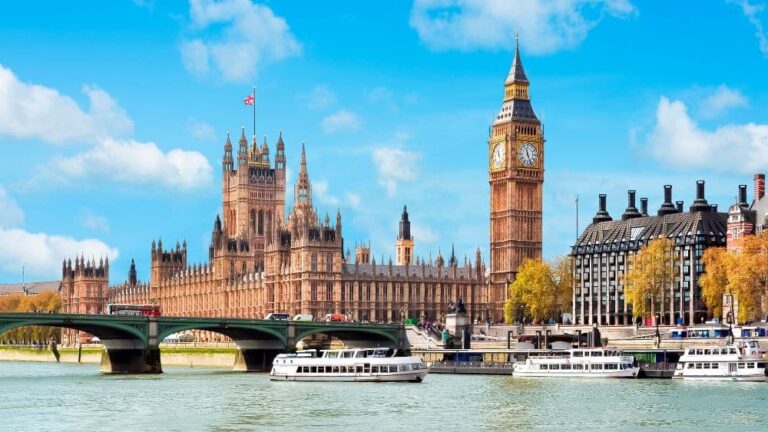
HMRC successful in challenging claim for tax allowances in marketed tax scheme
Dave Wase considers the wider implications of a recent Court of Appeal decision concerning Enterprise Zone Allowances and HMRC’s success in challenging tax avoidance schemes.
This article was first published in Taxation magazine on Thursday 8 December, 2022.
Key points:
- From their inception in FA 1980, Enterprise Zone Allowances (EZAs) presented the potential to claim enhanced capital allowances offering 100% relief for qualifying expenditure
- Two LLPs were formed (Cobalt Data Centre 2 and Cobalt Data Centre 3) and promoted to investors wishing to mitigate income tax
- HMRC denied the claims for EZAs on the basis the data centres were not constructed under the contract because it had been varied too much
- Enhanced allowances continue to be offered despite the risk that they might become the focus for exploitation or avoidance
- HMRC seems to be defeating more avoidance schemes in the higher courts
The recent Court of Appeal decision in Cobalt Data Centres 2 & 3 LLP (CDC2&3) perhaps does not make for the most engaging read for most tax advisers. However it did provide an interesting conclusion on contracts related to preserving time limited reliefs and the potential for wider counter avoidance impact and so is much more interesting than you first think.
By way of my personal background, in October 2018 I began working for PKF Francis Clark assisting clients with HMRC enquiries and especially any contact from HMRC’s Counter-Avoidance unit. Prior to this time, I had worked within HMRC and Inland Revenue for longer than is perhaps healthy, holding a variety of enforcement and compliance roles. My final years within the department were predominantly spent working tax avoidance scheme enquiries in what would eventually become the Counter-Avoidance directorate.
For my sins I perhaps found this latest decision by the Court of Appeal in this long running saga more interesting than most due to the fact I had been working within the EZA/BPRA Counter-Avoidance team from around 2014 up to leaving the department.
Currently we have Freeports and the Investment Areas as proposed by Liz Truss’s short term government. The first iteration of this type of tax privileged locations were Enterprise Zones which were introduced by Margaret Thatcher’s government and included places such as Canary Wharf. This case concerns an attempt to protect entitlement to the very generous tax allowances that were available in respect of those original enterprise zones.
Enterprise Zone Allowances
One of the tax reliefs was Enterprise Zone Allowances (EZAs), which were a form of industrial buildings allowances (IBAs) deep within Part 3 of CAA 2001. The legislation at play in the cases specifically related to sections 294, 296 and 298 which individually set out how any EZA claim should relate to expenditure on a building (s294), purchased unused from a developer (s296), within the time limit for qualifying enterprise zone expenditure (s298).
From their inception in FA 1980, EZAs presented the potential to claim enhanced capital allowances offering 100% relief for qualifying expenditure. Primarily eligibility for these allowances relied upon expenditure having been undertaken on works within a designated enterprise zone. Enterprise zone designation was often time limited and in the case of CDC2&3 that designation ran for 10 years from February 1996, expiring in February 2006.
Although designation lasted 10 years, construction expenditure on a site within an enterprise zone qualified for EZAs if it was incurred within that 10 years designation period, or was incurred under a contract entered into within the 10 years designation of the zone and within 20 years of the initial designation of the zone.
Whilst EZAs of the variety claimed by the likes of the CDC schemes are no longer available, the schemes did in fact create tangible buildings, hence the continuing attraction of such tax reliefs in regeneration plans such as “levelling up”. Inevitably, they also attracted tax mitigation (avoidance?) scheme providers. The Information Memorandum (IM) for such schemes would offer participators the opportunity to subscribe to a 100% investment in the build, but rather than pay in 100% participators could pay a much smaller upfront cash contribution supplemented with non-recourse lending by a bank to the investor.
How this would work
If all went well, then participators could receive more back in tax than they deposited in cash funds at year one.
An initial investment of cash would entitle the participator to a share in the overall EZA claim, which would ideally be close to 100% of the build costs. So for example if the individual’s gross investment was £100k, with a cash deposit of say, £30k, and the lending of £70k sometimes referred to as the loan gearing. The individual had in excess of £100k income taxable at higher tax rates of 40% that year. The investor then found their investment was immediately cash positive at year one to the tune of £10k as they would have received an income tax reduction of £40k against their initial outlay on the £30k cash deposit.
If all went well, then participators could receive more back in tax than they deposited in cash funds at year one. They also held a defined percentage stake in the physical property, which due to a further legislative condition introduced by FA 2008, could be realised after holding for seven years. In the meantime leases entered into as part of the arrangement generated a rental income stream sufficient to fund the non-recourse lending. So, there was a big tax incentive and the justification for it was to incentivise investment in an area that otherwise would not be funded and so kick start regeneration.
As some of these tax schemes ran into the tens of millions and even over £100m (as in this case), then you can readily appreciate why HMRC would consider the arrangements worthy of scrutiny.
In the mid to late 2000s HMRC began focusing more strongly on this type of scheme structure, as highlighted by the outcome of the Commissioners for HMRC v Tower MCashback LLP1 and another [2011] UKSC 19, within which the details of that scheme were outlined as follows:
“… the investor members of the LLPs were individuals with large incomes who themselves put up only 25% of the consideration said to have been paid for acquiring rights in software. The remaining 75% was provided by interest-free loans on non-recourse terms, made to the investor members by special purpose vehicles set up for the purpose. HMRC rely strongly on the circularity of these transactions… The essential issue (simply stated but not simply resolved) is whether the LLPs incurred capital expenditure, to the extent of the whole stated consideration, in acquiring software rights for the purposes of their trades.”
The Tower MCashback case also concerned the exploitation of enhanced capital allowances and essentially one of the main challenges in that case was to limit the allowable expenditure to that incurred on production of the actual software and not that which perhaps related to ‘expenditure’ necessary to fund the ongoing lending commitment.
The contract date issue
The arrangements were pre-packaged and were designed so that the investors didn’t have to get their hands dirty or get involved in the development. It was all pre-arranged and very significant amounts of tax relief were at stake.
The EZA legislation at the time entitled participators, incurring qualifying expenditure on industrial buildings within a designated enterprise zone, to a 100% capital allowance. Apart from incurring the expenditure during the period whilst the construction site was designated as being within an enterprise zone, as already mentioned, the legislation also allowed for expenditure to be incurred under a contract entered into in the period ending no later than 10 years after the site was first designated an enterprise zone or, if the expenditure was incurred under a contract entered into within those 10 years, up to 20 years after the site was first included in the zone (s298 CAA 2001).
On 17 February 2006 two special purpose companies which had only been set up in December 2005 and are referred to as “the developer” and “the contractor”, entered into a contract in respect of part of the Tyne Riverside Enterprise Zone. That enterprise zone was due to expire on 18 February 2006 and the sole purpose of this arrangement was to try and extend the entitlement to EZAs should the land be developed.
As it wasn’t known at the time how the land would be developed, the land was allocated to three sites (A to C) in Cobalt Business Park, and six different development options were identified (Options 1 to 6). The contract, which incorporated, with modifications, the standard JCT terms, set out the six ‘Works Options’ for the site and modified the ‘Employer’s Requirements’ in respect of ‘the alteration or modification of the design, quality or quantity of the Works’. So, it was possible to choose a site and a development option. Only one of these options was for a data centre.
Time moved on, but with no development commencing, and in February and April 2009, the contract was varied by two legal agreements which altered how the Works Options could be exercised. In November 2009, the developer’s agent issued a change order under the contract. By this time FA 2008 had been introduced and it had been legislated that IBAs (and by extension EZAs) were to be phased out and abolished from 6 April 2011 (for income tax).
So, in the run-up to the end of the 2010/11 tax year, and the abolition of the EZAs on 6 April 2011 for income tax, steps were taken to get the development of the land to happen and to “bank” the tax relief. Two LLPs were formed (CDC2&3) on 19 January and 15 March 2011 and promoted to investors wishing to mitigate income tax. Two further change orders were also issued to reflect the desired arrangements. These were in respect of building a shell and core for a data centre, and then requiring the addition of a second data centre, both on different sites. The Works Options had included only a single option for a data centre and that had already been built.
The old mantra remains that if it is too good to be true, then it generally should be avoided.
Then on 1 April and 4 April 2011, the developer company made advance payments to the contractor company of approximately £97m, which were funded by debt finance and would be repaid once the funds were received from CDC2&3.
On 4 April 2011, CDC2&3 each acquired an assignment of rights under this “Golden Contract” and entered into the sale and development agreements in relation to the project. The two data centres were eventually built. CDC2&3 claimed EZAs on the expenditure they had incurred acquiring rights under the Golden Contracts.
To summarise, over five years after the enterprise zone status had expired, two debt leveraged and non-recourse marketed tax schemes acquired contractual rights under a development agreement that had been substantially varied and changed since it was signed. The arrangements were pre-packaged and were designed so that the investors didn’t have to get their hands dirty or get involved in the development. It was all pre-arranged and very significant amounts of tax relief were at stake given the 50% income tax rate in force at the time. In that way, these tax schemes look similar to film partnership funding schemes, and others, of that time.
In hindsight, unsurprisingly, HMRC initially denied claims by CDC2&3 for EZAs in full. This decision was appealed to the First-tier Tribunal and Judicial Review proceedings then commenced on the basis that the position adopted by HMRC was contrary to their published practice, there being a legitimate expectation based on guidance and discussions at a high level with representational bodies and what at the time was the Inland Revenue. Both proceedings later transferred to the Upper Tribunal, who determined the LLPs were entitled to roughly 50% of their EZA claims being approximately £76m and £58m respectively.
Up to this point there had been other EZA tribunal cases and even Judicial Review, which mainly focused on challenging the quantum of the expenditure claimed by application of the Ramsay Principle, challenging the circulatory nature of the funding in a similar vein to the Tower MCashback case approach.
A further argument had also been advanced as to whether there was indeed a business operating with a view to a profit within section 863 ITTOIA 2005, as if the LLPs were not transparent then they fell within corporation tax and as EZAs were abolished on 1 April 2011 there was no entitlement to tax relief in any event. That argument was not further pursued.
Court of Appeal
The Court of Appeal decision on the twinned case of CDC2&3 was released on 31 October 2022 and it denied the participators their claims for EZAs in full.
HMRC argued that the data centres were not constructed under the Golden Contract at all and that the change orders were so radical that they were no longer variations but instead a new and self-standing contract.
Representatives for the LLPs argued that the change orders providing for the later data centres gave the effect by variation to Works Option 1 in the Golden Contract. However, the contract only permitted the selection of one project under a particular works option and Works Option 1 had already been selected in constructing the first Cobalt Data Centre.
The work described in the change orders was found to have been “radically different in kind” from that described in the works option as they provided for a different building on a different site and for a different price. These features led to the conclusion that the data centres were not constructed under a contract entered into within the 10 year period (the Golden Contract). The expenditure therefore did not qualify for allowances.
The Court of Appeal found that the works instructed by means of the change orders was “wholly outside the existing scope” of the original Golden Contract and for consideration not mentioned in that original contract. It also found that the works were undertaken on part of the Cobalt site not covered by Works Option 1 which as stated previously had already been exercised for the construction of the first Cobalt Data Centre. The claims to EZAs were therefore not allowable as the expenditure was held not to have been incurred under the Golden Contract which had preserved the claim, but a further contract executed out of time.
The decision to reject the EZAs claimed hinged on the Court of Appeal finding that the Golden Contract which preserved the right to EZAs had been varied to such an extent that the variation agreement effectively created a new contract. That new contract was executed out of time and so no EZAs were due at all.
With Accelerated Payment Notices having been issued in around the mid-2010s, these generally gave some limited relief, perhaps as much as 40-50% in some cases. If their schemes are similarly affected, then those participators could now be looking at a significant further tax bill, where they have not already settled their participation in similar schemes with HMRC.
Wider implications of the case
If the client is not engaging in genuine risk, then is the scheme a proper investment deserving the tax relief, or something else?
Although HMRC might have separate challenges dependent on the avoidance vehicle, especially whether LLP or syndicate driven, this outcome is potentially fatal across the board and not only for EZA schemes. Where the scheme related to the exploitation of enhanced allowances and entitlement to that allowance or relief was perhaps time limited, then if entitlement rested on execution of a contract which has subsequently been amended or varied, this could now become problematic.
Enhanced allowances continue to be offered despite the risk that they might become the focus for exploitation or avoidance. Recently Freeports have been designated across the UK entitling eligible businesses to a raft of tax breaks including enhanced Structures and Building Allowances (SBAs) and enhanced plant and machinery allowances all designed to incentivise investment within Freeport ‘tax sites’ nationally. Then there is also what is likely to happen with the Investment Areas. This case highlights why HM Treasury and HMRC have reservations about excessive tax relief being claimed in respect of such areas.
Outside of this avoidance arena, in the normal course of business this perhaps emphasises the need to ensure contracts entered into are robust. Certainly, in my admittedly short time spent working within private practise, I have seen instances where advisors have not treated the legal paperwork with the seriousness it deserved and this has impacted seriously on the outcome of subsequent HMRC enquiries. Advisors should be mindful of the fact that, if a certain transaction is picked up for enquiry, then all the relevant paperwork is very likely to cross HMRC’s desk at some point.
As regards any future investment opportunities offered directly or perhaps requests for advice following approaches made to clients, the old mantra remains that if it is too good to be true, then it generally should be avoided. With these schemes and those like them, especially where they are cash positive at year one, without recourse, the big warning should be the lack of apparent risk. A genuine investment will have an element of risk to it. Where the lending is non-recourse then the bank or financial institution is taking that risk away. If the client is not engaging in genuine risk, then is the scheme a proper investment deserving the tax relief, or something else?
HMRC success rates
HMRC success rates on challenging perceived avoidance was always a bit of a thorny issue both inside and outside HMRC. Within the published “HMRC 10 Things About Tax Avoidance” in 2015 it states that “Most avoidance schemes simply do not work. HMRC wins around 9 out of 10 avoidance cases that the taxpayer chooses to take to court and many more users settle with us before that stage”. However what is not included here is how many cases HMRC chooses not to take further and litigate. That said, HMRC do seem to be honing their skills of late and more avoidance schemes appear to be being defeated in the higher courts as the litigation process reaches its final conclusion.
Whilst the litigation process on any of the marketed schemes has not been thoroughly exhausted, there remains the potential for a further opportunity to settle at some point, dependent on HMRC’s application of their Litigation and Settlements Strategy. This strategy can prevent the enquiry teams from offering enhanced terms, but as these matters have generally been ongoing for more than a decade now, some clients are simply keen to pay the tax and interest in order to exit the avoidance in a manner which is as penalty-light for them as possible.
A final thought, with regard to the two schemes in question, CDC2&3, a review of the online Cobalt Park map indicates that both data centres are still available to let over 10 years after completion of construction to their shell stage.
Find out more about PKF Francis Clark’s tax experts.
Written by












